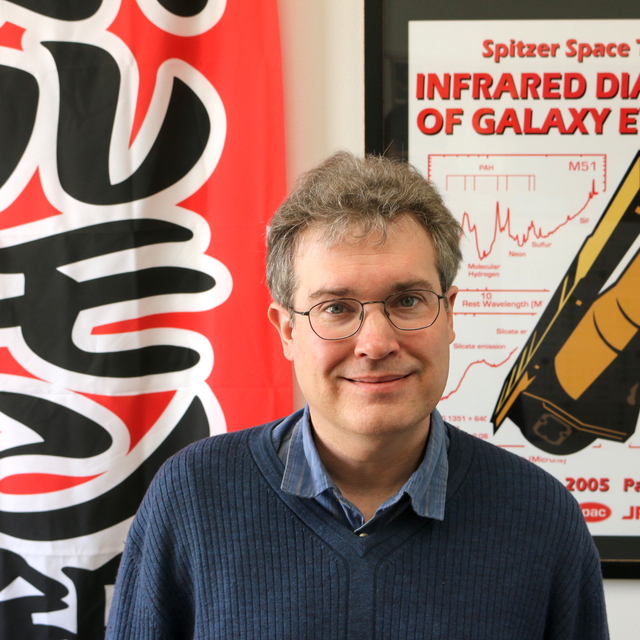
Lyman Continuum Leakers in the AstroSat Ultraviolet Deep Field: Extreme-ultraviolet Emitters at the Cosmic Noon
March 2024 • 2024ApJ...963L..23D
Abstract • We report the direct detection of Lyman continuum (LyC) emission from nine galaxies and one active galactic nucleus at z ∼ 1.1–1.6 in the GOODS-North field using deep observations from the Ultraviolet Imaging Telescope (UVIT) on board AstroSat. The absolute escape fraction of the sources estimated from the far-ultraviolet and Hα-line luminosities using Monte Carlo analysis of two intergalactic medium models span a range ∼10%–55%. The rest-frame UV wavelength of the sources falls in the extreme-ultraviolet regime ∼550–700 Å, the shortest LyC wavelength range probed so far. This redshift range remains devoid of direct detections of LyC emission due to the instrumental limitations of previously available facilities. With UVIT having very low detector noise, each of these sources is detected with an individual signal-to-noise ratio (S/N) > 3, while for the stack of six sources, we achieve an S/N ∼ 7.4. The LyC emission is seen to be offset from the optical centroids and extended beyond the UVIT point-spread function of 1.″6 in most of the sources. This sample fills an important niche between GALEX and Cosmic Origins Spectrograph at low z and Hubble Space Telescope's Wide Field Camera 3 at high z and is crucial in understanding the evolution of LyC leakers.
Links
- PREPRINT http://arxiv.org/abs/2401.13269
- NED https://ned.ipac.caltech.edu/uri/NED::InRefcode/2024ApJ...963L..23D
- ELECTR https://doi.org/10.3847/2041-8213/ad2344
- SIMBAD https://simbad.u-strasbg.fr/simbad/sim-ref?querymethod=bib&simbo=on&submit=submit+bibcode&bibcode=2024ApJ...963L..23D
- PDF https://iopscience.iop.org/article/10.3847/2041-8213/ad2344/pdf
- DATA https://archive.stsci.edu/mastbibref.php?bibcode=2024ApJ...963L..23D
- DATA https://hst.esac.esa.int/ehst/#/pages/search;bibcode=2024ApJ...963L..23D



